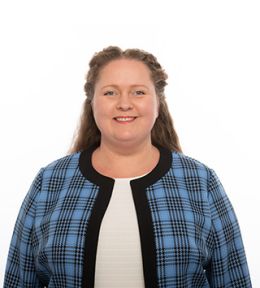MMAE Seminar: Histotripsy-Enhanced Thrombolysis
The Department of Mechanical, Materials, and Aerospace Engineering welcomes Kenneth Bader, Ph.D., assistant professor of Radiology at the University of Chicago, to discuss "Histotripsy-Enhanced Thrombolysis" on Wednesday, March 11.
ABSTRACT
Deep vein thrombosis (DVT) is a major public health problem, affecting 600,000 Americans annually with a healthcare cost of $10 billion and more than 100,000 deaths. The American Heart Association recommends catheter-directed thrombolytics or mechanical interventions for critical obstructions to prevent amputation of the afflicted limb or death. These treatment regimens are not effective for the chronic thrombus components present in 27 to 43% of DVT cases. Our preliminary studies demonstrate synergy between histotripsy, a form of therapeutic ultrasound that employs the mechanical action of bubble clouds to ablate tissue and induce fluid mixing, and the thrombolytic recombinant tissue plasminogen activator (rt-PA) for enhancing thrombolysis of retracted venous clots in vitro. The bubble clouds are hyperechoic, enabling standard B-mode imaging to be used for image guidance. The volumetric oscillations of the bubbles also generate acoustic emissions proportional to the mechanical activity generated during the histotripsy pulse. Passive cavitation imaging (PCI) utilizes clinical imaging arrays to record and beamform emissions, generating maps of the location and strength of bubble cloud emissions. Here, the utility of PCI to predict histotripsy ablation will be assessed using receiver operating characteristic (ROC) curve analysis and compared to plane wave B-mode imaging in a gel phantom. The area under the ROC curve, accuracy, and sensitivity were greater for PCI relative to B-mode imaging (p < 0.05), albeit with limited passive cavitation image range resolution. Further analysis of histotripsy-generated emissions in an in vitro porcine clot model ascertained no variation in the power or location of bubble cloud activity with or without thrombolytic drugs. However, the thrombolytic efficacy was improved significantly in the presence of rt-PA. Overall, PCI is a promising modality for monitoring histotripsy-enhanced thrombolysis. Finally, we will discuss advanced automation to translate the histotripsy source under feedback from PCI tracking of bubble activity.
BIOGRAPHY
Bader attended Grand Valley State University majoring in physics and minored in mathematics. He obtained a Ph.D. in physics at the University of Mississippi, and completed a postdoctoral fellowship in the department of internal medicine at the University of Cincinnati. Kenneth is now an Assistant Professor within the Department of Radiology at the University of Chicago, and holds a secondary appointment in the Committees on Medical Physics and Cancer Biology. He teaches courses at the graduate and undergraduate levels, and serves as the Chair of the Graduate Program in Medical Physics Diversity Committee. Bader is a member of the Acoustical Society of America (ASA), IEEE, and American Institute of Ultrasound in Medicine (AIUM).
He serves on the Standards Committee for the ASA, and the Bioeffects Committee for the AIUM and on the Biomedical Acoustic Technical Committee He has been a member of the Acoustical Society since 2005, serving as a session chair or co-chair multiple times. His primary research interests are in the development of therapeutic strategies utilizing ultrasound physics to improve healthcare. The research focus of his laboratory at the University of Chicago is image-guidance techniques for mechanically and thermally ablative forms therapeutic ultrasound for the treatment of chronic deep vein thrombosis and cancerous disease. This work is currently funded in part by an R01 award and other intramural funding.
Event Contact


